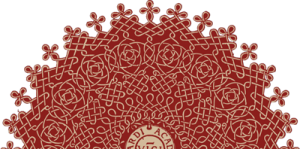
By Madeleine Campbell
‘The migrant voice, quiet and little schizophrenic’ was the title of a reading due to be given by Claudia Ciobanu, Romanian exile in Warsaw and editor-in-chief of Mămăliga de Varșovia magazine, a migrant literature periodical. Its co-founder Teodor Ajder, scheduled to give a talk on the ‘Multifaceted presence/absence of non-Polish writers living in Poland’, tells us the title means something like Cold Porridge in Warsaw. Unable to attend the Workshop’s panel session on ‘Self-Representation’, Claudia was literally represented by her compatriot Teodor, who introduced her as “a [Romanian] journalist who writes in English, lives in Poland and feels homeless.”
Claudia, whose topic is mainly ecology, had just published an article in The Guardian on the benefits of EU membership to Romania. Reading out an extract from Claudia’s essay, Teodor relates how she “retreated from Polishness into migranthood” when she started the magazine:  Romanians wanted to read it in Romanian, and Poles in Polish. Running a bilingual mag, always being asked what it’s like to be a migrant, she felt that “to those asking me questions my migrant identity had swallowed up my whole being.”
Romanians wanted to read it in Romanian, and Poles in Polish. Running a bilingual mag, always being asked what it’s like to be a migrant, she felt that “to those asking me questions my migrant identity had swallowed up my whole being.”
Representation, even when it is self-representation, is a tricky aesthetic and moral question, all the more so in the context of the elusive, emotionally and politically charged notion of the migrant, and this topic dominated the two-day workshop held in Warsaw on the ‘Cultural Literacy of Migration: Affects, Memory, Concepts’.

“Copernicus”, in front of the Staszic Palace, Warsaw. Photo by Madeleine Campbell.
Hosted by the Institute of Literary Research of the Polish Academy of Sciences (IBL PAN), the workshop was a planning event for the forthcoming international Cultural Literacy in Europe (CLE) conference, scheduled for 10-12 May 2017, also to be hosted by IBL PAN. Maciej Maryl explained that IBL, which in Polish stands for Instytut Badan Literackich, was founded after the war and is unique in that it is a research institution, concentrating on long-term projects, like scholarly editions, documentation, and basic research mostly connected to history of literature but also cultural studies.
The first part of the workshop, held in the magnificent Staszic Palace on Nowy Świat, a stone’s throw from the Copernicus monument, introduced the work of Institute researchers. International participants, members of CLE and representatives from cultural, political, academic and activist organizations based in Poland, including the Polish Institute for International Affairs were also invited to present. Organized into four panels with short, ten-minute presentations followed by discussion, this widely diverse group of participants and perspectives generated a remarkably convergent set of observations. Recurring themes to emerge over the two days related to the discourse of migration,  nationhood and guilt, the migrant’s voice and the special issue of language, the changing perceptions of young people in a multi-cultural, digital world, and specific readings of artefacts on migration.
nationhood and guilt, the migrant’s voice and the special issue of language, the changing perceptions of young people in a multi-cultural, digital world, and specific readings of artefacts on migration.
Of several short films screened at the workshop, perhaps the most controversial was the Amnesty International film Look beyond Borders—4 mns Experiment. Presented by Draginja Nadażdin, Director of Amnesty International in Poland, the screening followed her talk on ‘Avoiding the responsibility for refugees’, when she observed that “calling [refugees] names is very common practice: we don’t hear political leaders trying to stop this rhetoric.”
 Based on a technique developed by American Psychologist Arthur Aron’s research on intimacy, the filmmakers invited refugees and non-refugees to spend 4 mns looking into each other’s eyes. New migrants couldn’t be found in Poland to participate: most prefer to go to other countries and this film was made in Berlin. In response to the screening, some argued that estrangement isn’t about empathy, it’s more about accepting that we are all different, and in this respect more of an intellectual development. For others it recalled the French Jewish philosopher Emmanuel Levinas: “in the face to face there’s no knowledge, no labeling, no taking of the other.” Reservations were voiced, however, about the methodology, and scepticism about the artificially positive image it projected, given that the people featured constituted a self-selecting sample.
Based on a technique developed by American Psychologist Arthur Aron’s research on intimacy, the filmmakers invited refugees and non-refugees to spend 4 mns looking into each other’s eyes. New migrants couldn’t be found in Poland to participate: most prefer to go to other countries and this film was made in Berlin. In response to the screening, some argued that estrangement isn’t about empathy, it’s more about accepting that we are all different, and in this respect more of an intellectual development. For others it recalled the French Jewish philosopher Emmanuel Levinas: “in the face to face there’s no knowledge, no labeling, no taking of the other.” Reservations were voiced, however, about the methodology, and scepticism about the artificially positive image it projected, given that the people featured constituted a self-selecting sample.
The film also prompted discussion about the current situation in Poland and the UK: “Many immigrants in Poland, here for over 10-20 years, are starting to fear more and more that they are ‘other’, in the last year. Opportunities for integration and contact are changing,” said a participant. Naomi Segal, of CLE, flagged that the same is happening in the UK, for example Jews who have been there for a long time are starting to feel on edge.
 Andrzej Leder, from the Institute of Philosophy and Sociology of the Polish Academy of Sciences, postulated that the fact that the Holocaust was not worked through determines the attitudes of Poles towards immigrants: “We can hear this in the discourse about immigration; often ‘not our problem’, ‘we are not guilty’, all the sentences are testimony of a sense of helplessness and escape from responsibility.” When a group is deprived of political sovereignty, argued Andrzej, this kind of attitude to responsibility develops, along with a deep distrust of political hegemony and institutions — this is the post-communist narrative and this political shunning of responsibility then applies also to the moral dimension.
Andrzej Leder, from the Institute of Philosophy and Sociology of the Polish Academy of Sciences, postulated that the fact that the Holocaust was not worked through determines the attitudes of Poles towards immigrants: “We can hear this in the discourse about immigration; often ‘not our problem’, ‘we are not guilty’, all the sentences are testimony of a sense of helplessness and escape from responsibility.” When a group is deprived of political sovereignty, argued Andrzej, this kind of attitude to responsibility develops, along with a deep distrust of political hegemony and institutions — this is the post-communist narrative and this political shunning of responsibility then applies also to the moral dimension.
 The tone for the Panel on ‘Ethics and Memory’ was set by John Sundholm, who argued that “Memory is where we have arrived rather than where we have left.” Speaking for the working group funded by the Swedish Research Council on ‘The Cultural Practice of Immigrant Filmmaking (2013-2015)’, John said they wanted a new way of looking at memory, stressing agency and doability, and a movement in emphasis from artefacts to acts. Looking for some kind of theory of cultural production, John argued for temporary makings in different contexts and present-oriented practices. His working group is building an archive of films made by migrants themselves as a way of giving them voice, allowing ‘them’ to address ‘us’ directly. By way of example, John screened one such film, the haunting Five minutes for America in Quechua/Spanish, with subtitles in Swedish, based on a Cesar Galindopa poem.
The tone for the Panel on ‘Ethics and Memory’ was set by John Sundholm, who argued that “Memory is where we have arrived rather than where we have left.” Speaking for the working group funded by the Swedish Research Council on ‘The Cultural Practice of Immigrant Filmmaking (2013-2015)’, John said they wanted a new way of looking at memory, stressing agency and doability, and a movement in emphasis from artefacts to acts. Looking for some kind of theory of cultural production, John argued for temporary makings in different contexts and present-oriented practices. His working group is building an archive of films made by migrants themselves as a way of giving them voice, allowing ‘them’ to address ‘us’ directly. By way of example, John screened one such film, the haunting Five minutes for America in Quechua/Spanish, with subtitles in Swedish, based on a Cesar Galindopa poem.
 The topics for the second day of the workshop were ‘Self-representation’ and ‘Representing Migration’. Joanna Kosmalska spoke on Polish migrant literature in the British Isles and Ireland, much of which can be found at the University of Łódź in a virtual archive. There is a similarity between migrant writings and blogs, observed Joanna: short topic-oriented sections, Skype conversations, photos, emails, videoclips on YouTube. Their language is characterized by neologisms, acronyms, abbreviations, short sentences, instant messaging, linguistic hybridity, creolisation, polonised English words, interjections in Arabic, literal translations.
The topics for the second day of the workshop were ‘Self-representation’ and ‘Representing Migration’. Joanna Kosmalska spoke on Polish migrant literature in the British Isles and Ireland, much of which can be found at the University of Łódź in a virtual archive. There is a similarity between migrant writings and blogs, observed Joanna: short topic-oriented sections, Skype conversations, photos, emails, videoclips on YouTube. Their language is characterized by neologisms, acronyms, abbreviations, short sentences, instant messaging, linguistic hybridity, creolisation, polonised English words, interjections in Arabic, literal translations.
 Blogs and online diaries benefit from reader response, and they are already shaped by readership when taken up by publishing houses. The 2014 Finite Formulae & Theories of Chance, published by Arc in the UK, started out as a blog by a Polish poet who lives on the Isle of Wight, Wioletta Grzegorzewska (her surname abbreviated to Greg for the British public). Translated by Marek Kazmierski, it was shortlisted for the 2015 Griffin Poetry Prize. Such publications, Joanna argues, are emblematic of a new kind of cross-cultural, cross-linguistic exchange, and there is a surge of migrant writing full of social and cultural information, but arguably of little aesthetic value. Yet low brow can only be seen as such in the current context, for example Frankenstein was once considered low brow and is now a classic.
Blogs and online diaries benefit from reader response, and they are already shaped by readership when taken up by publishing houses. The 2014 Finite Formulae & Theories of Chance, published by Arc in the UK, started out as a blog by a Polish poet who lives on the Isle of Wight, Wioletta Grzegorzewska (her surname abbreviated to Greg for the British public). Translated by Marek Kazmierski, it was shortlisted for the 2015 Griffin Poetry Prize. Such publications, Joanna argues, are emblematic of a new kind of cross-cultural, cross-linguistic exchange, and there is a surge of migrant writing full of social and cultural information, but arguably of little aesthetic value. Yet low brow can only be seen as such in the current context, for example Frankenstein was once considered low brow and is now a classic.
 Robert Crawshaw, from the University of Lancaster, noted the problem for theory posed by Ariane Mnouchkine’s Le dernier caravanserail. The opening scene was a reenactment of migrant travel across the ocean, and the movement of sheets rendered it very life-like. The play consisted of little episodes in which the artificiality and amateur performances were patently clear, but it nevertheless evoked a Brechtian identification. How to approach such forms of representation is a very significant issue for higher education: “what is,” he asks, “its impact, is it greater than a news broadcast?” The question arises as to how such virtual texts are to be read, where materiality and fictionality are confounded, neither literature not metaphorical, yet symbolic. This is very unlike, Robert remarked, Five Minutes for America, where a mysterious horse rider
Robert Crawshaw, from the University of Lancaster, noted the problem for theory posed by Ariane Mnouchkine’s Le dernier caravanserail. The opening scene was a reenactment of migrant travel across the ocean, and the movement of sheets rendered it very life-like. The play consisted of little episodes in which the artificiality and amateur performances were patently clear, but it nevertheless evoked a Brechtian identification. How to approach such forms of representation is a very significant issue for higher education: “what is,” he asks, “its impact, is it greater than a news broadcast?” The question arises as to how such virtual texts are to be read, where materiality and fictionality are confounded, neither literature not metaphorical, yet symbolic. This is very unlike, Robert remarked, Five Minutes for America, where a mysterious horse rider is glimpsed through billowing smoke, meandering back and forth between the viewer and Quechua musicians through a scene of carnage: he could be a conquistador, a crusader, or an American football player.
is glimpsed through billowing smoke, meandering back and forth between the viewer and Quechua musicians through a scene of carnage: he could be a conquistador, a crusader, or an American football player.
Dorota Jarecka (IBL), who cooperates with different art institutions and teaches at the Academy of Fine Art, asked: “how do artists deal with representation when meeting ‘the other’, which is a form of power, [when] not representing is turning one’s back?” Postulating that it is primarily a question of distance and perspective, she compared modes of representation adopted by two very different contemporary artists: the Chinese dissident Ai Weiwei and the British artist and filmmaker Isaac Julien.
 Weiwei travelled to Lesbos, volunteered, took photos there, placing himself among the refugees, that he shared on Instagram. Dorota sees this as a gesture of inclusion, a sort of selfie, at once in the picture and outside of it while this is of course also a condition for the image. This raises the question as to how representation can be accurate. In January 2016, Weiwei crafted a photo of himself in the position of the drowned Syrian child Aylan Kurdi, found on a beach in Turkey after the boat his family took capsized on their journey to Kos. In Rabat, dozens of people laid down in the sand to pay tribute. But Weiwei’s image spread throughout the world. Paradoxically, such an image is representation because it is not direct — “[it] identifies with the other because Weiwei is someone else, yet he is also the other, also a refugee.”
Weiwei travelled to Lesbos, volunteered, took photos there, placing himself among the refugees, that he shared on Instagram. Dorota sees this as a gesture of inclusion, a sort of selfie, at once in the picture and outside of it while this is of course also a condition for the image. This raises the question as to how representation can be accurate. In January 2016, Weiwei crafted a photo of himself in the position of the drowned Syrian child Aylan Kurdi, found on a beach in Turkey after the boat his family took capsized on their journey to Kos. In Rabat, dozens of people laid down in the sand to pay tribute. But Weiwei’s image spread throughout the world. Paradoxically, such an image is representation because it is not direct — “[it] identifies with the other because Weiwei is someone else, yet he is also the other, also a refugee.”
 Dorota contrasted Weiwei’s work with Isaac Julien’s representation of Lampedusa in his multi-screen 2007 installation Small Boats, Slave Ships showing images symbolizing clandestine migration in the Mediterranean. Viewing such a lot of montage, transfers to other screens, black and white bodies appearing, some helped, some not, produces a feeling of detachment. On first impression it is embarrassing in aesthetic terms, appears devoid of any critical aspect. Yet, asks Dorota, what if Isaac Julien is aware of the political entanglement, what if he is, as second generation Caribbean, black and gay, playing out the difference? In another film called True North (2004), looking out on an ice-white setting reminiscent of a Caspar David Friedrich landscape, Julien claimed the medium as his tool to master the view. Thus, concludes Dorota, while Weiwei tries to make distance shorter, Julien tries to make it his.
Dorota contrasted Weiwei’s work with Isaac Julien’s representation of Lampedusa in his multi-screen 2007 installation Small Boats, Slave Ships showing images symbolizing clandestine migration in the Mediterranean. Viewing such a lot of montage, transfers to other screens, black and white bodies appearing, some helped, some not, produces a feeling of detachment. On first impression it is embarrassing in aesthetic terms, appears devoid of any critical aspect. Yet, asks Dorota, what if Isaac Julien is aware of the political entanglement, what if he is, as second generation Caribbean, black and gay, playing out the difference? In another film called True North (2004), looking out on an ice-white setting reminiscent of a Caspar David Friedrich landscape, Julien claimed the medium as his tool to master the view. Thus, concludes Dorota, while Weiwei tries to make distance shorter, Julien tries to make it his.
 The final presentation was given by Paweł Mościcki (IBL) on the ‘Fleeing Visibility of the Refugees’. Discussing the 2004 film Border by Laura Waddington about illegal immigrants from Calais trying to get to the UK, Paweł noted the paradoxical truth of their situation where invisibility equates to an ability to move. Waddington’s film, Paweł suggests, is a poetic montage which shows not so much the direct reality as the relation between the filmer and ‘them’. Representation in Border, Paweł argues, is a chance to travel, the opposite of an illegal immigrant’s status: how can this be useful to migrants? In order to represent someone “we have to make him still, in a fixed frame, or even in film, it is immobilization — isn’t this exactly the same as mainstream media, transporting their presences in all sorts of spaces, an act of closing their existence? Ready-made, disposable.” Yet Waddington is trying to shift from representation to sharing, an ethical decision to stay with the refugees, not enclosing them in a suffocating identity. In the film there is also e-motion, movement of the affect, Paweł concluded, and as such these emotions can be shared.
The final presentation was given by Paweł Mościcki (IBL) on the ‘Fleeing Visibility of the Refugees’. Discussing the 2004 film Border by Laura Waddington about illegal immigrants from Calais trying to get to the UK, Paweł noted the paradoxical truth of their situation where invisibility equates to an ability to move. Waddington’s film, Paweł suggests, is a poetic montage which shows not so much the direct reality as the relation between the filmer and ‘them’. Representation in Border, Paweł argues, is a chance to travel, the opposite of an illegal immigrant’s status: how can this be useful to migrants? In order to represent someone “we have to make him still, in a fixed frame, or even in film, it is immobilization — isn’t this exactly the same as mainstream media, transporting their presences in all sorts of spaces, an act of closing their existence? Ready-made, disposable.” Yet Waddington is trying to shift from representation to sharing, an ethical decision to stay with the refugees, not enclosing them in a suffocating identity. In the film there is also e-motion, movement of the affect, Paweł concluded, and as such these emotions can be shared.
 Wrapping up the discussion in the context of cultural literacy Naomi Segal aptly said the workshop had “covered the penumbra of migration.” A common question arising from most of the papers presented relates to how representation mediates the way we look at things. Another theme that emerged was the potential significance in understanding culture today of the more fluid phenomenon of movement, mobility, process (of beings, concepts, borders), which was contrasted with a narrower definition of migration, encumbered as it is with mediatized, socio-politically charged narratives: we live in a culture characterized by mobility, and in terms of cultural literacy this means that different acts of text are put in different contexts we don’t understand.
Wrapping up the discussion in the context of cultural literacy Naomi Segal aptly said the workshop had “covered the penumbra of migration.” A common question arising from most of the papers presented relates to how representation mediates the way we look at things. Another theme that emerged was the potential significance in understanding culture today of the more fluid phenomenon of movement, mobility, process (of beings, concepts, borders), which was contrasted with a narrower definition of migration, encumbered as it is with mediatized, socio-politically charged narratives: we live in a culture characterized by mobility, and in terms of cultural literacy this means that different acts of text are put in different contexts we don’t understand.
![]() Thus although the theme envisaged for the 2017 conference was initially migration, the proposed outcome was to shift this theme out of its essentializing connotations to encompass broader notions of movement, motion and emotion on multiple intersecting planes: affect, the body and disability, the physical and digital movement of languages, concepts and images across social, geographical or national borders, and the defining elements of distance and perspective in reading or understanding the mobility of cultural acts and artefacts.
Thus although the theme envisaged for the 2017 conference was initially migration, the proposed outcome was to shift this theme out of its essentializing connotations to encompass broader notions of movement, motion and emotion on multiple intersecting planes: affect, the body and disability, the physical and digital movement of languages, concepts and images across social, geographical or national borders, and the defining elements of distance and perspective in reading or understanding the mobility of cultural acts and artefacts.
 The Workshop Cultural Literacy of Migration: Affects, Memory, Concepts was held in Warsaw 18-19 May 2016, hosted by the Institute of Literary Research of the Polish Academy of Sciences (IBL PAN) and organised by Maciej Maryl, Anna Barcz, Dorota Jarecka, Adam Lipszyc, Karolina Felberg-Sandecka, Nina Kancewicz-Hoffman, Paweł Mościcki, Justyna Tabaszewska, and Marek Zaleski.
The Workshop Cultural Literacy of Migration: Affects, Memory, Concepts was held in Warsaw 18-19 May 2016, hosted by the Institute of Literary Research of the Polish Academy of Sciences (IBL PAN) and organised by Maciej Maryl, Anna Barcz, Dorota Jarecka, Adam Lipszyc, Karolina Felberg-Sandecka, Nina Kancewicz-Hoffman, Paweł Mościcki, Justyna Tabaszewska, and Marek Zaleski.


